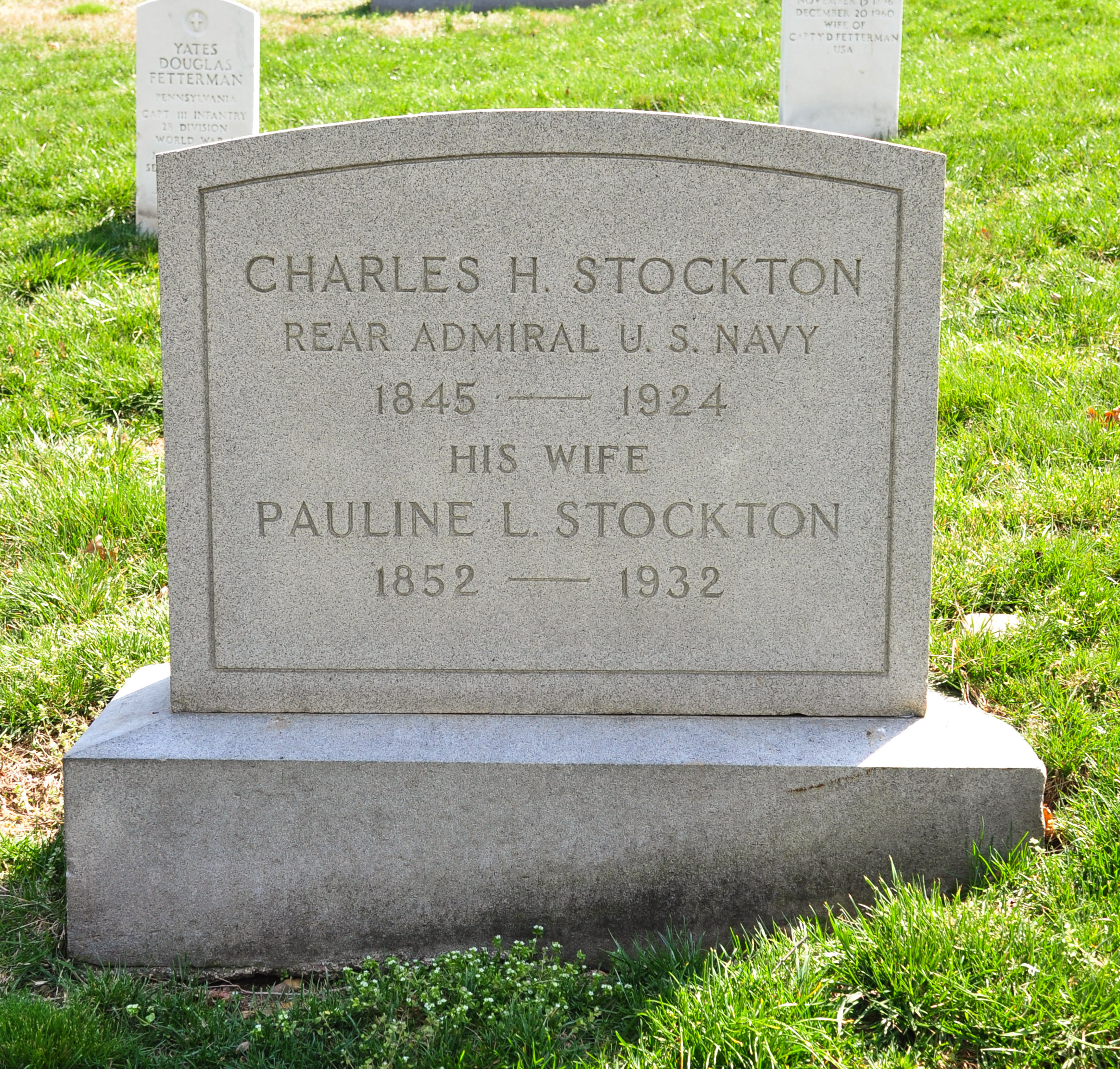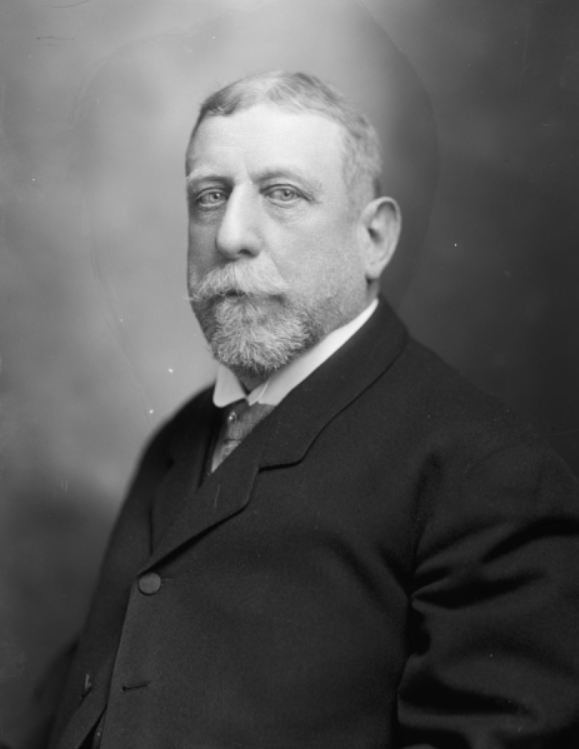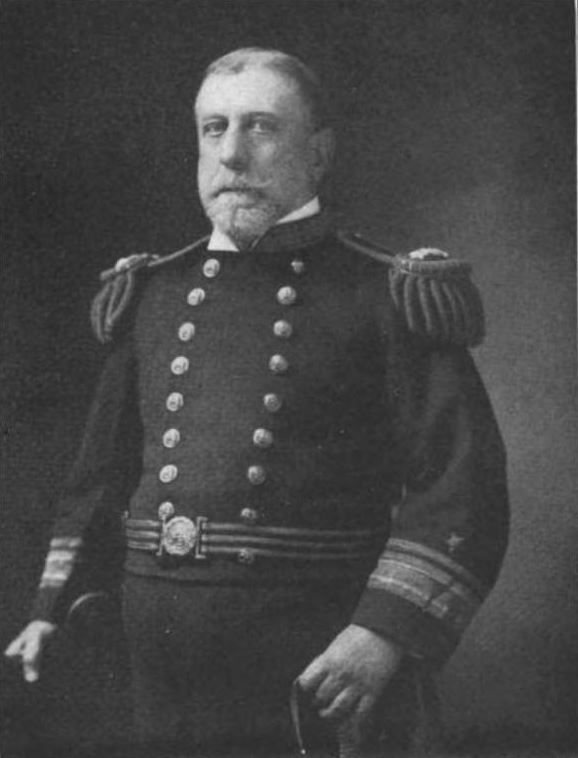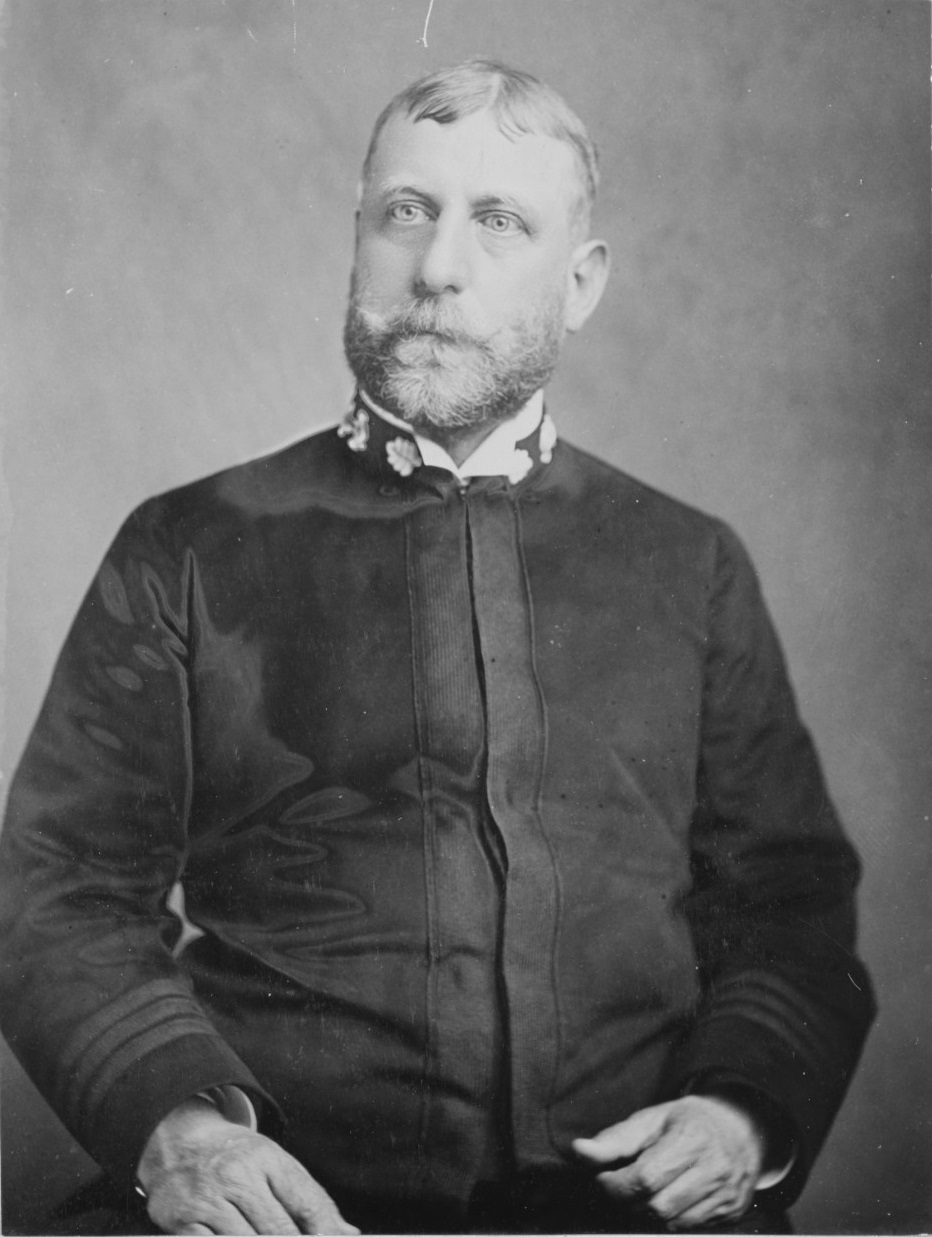He was the son of Rev. William Stockton and Emma Goss Stockton.
On November 23, 1880 as Charles H. Stockton, he married Pauline Lentilhon King at Grace Church in New York.
They were the parents of two children.
The son of Rev. William Stockton and his wife, Emma Goss Stockton, Charles Stockton was educated at Germantown Academy and Freeland Academy before entering the United States Naval Academy, then temporarily located at Newport, Rhode Island. He graduated from the Academy in 1865.
Stockton served on the North Pacific Station, 1865 to 1869, then in USS Brooklyn (1858), flagship of the European Squadron, 1870 to 1873. After instruction at the Naval Torpedo Station at Newport, Rhode Island, in 1873, he had a variety of ship and shore duties relating to that area, served at the Hydrographic Office, 1875 to 1876, and lectured at the Naval War College, 1887 to 1888. In 1890 to 1891, he commanded USS Thetis, the first vessel to follow the entire coastline of Alaska, and published an article (1890) on this cruise in the new National Geographic Magazine as well as technical papers on Bering Strait ice conditions, before cruising off El Salvador and Guatemala during the 1890 war. In 1891, he became President of the Naval War College and supervised construction of its first, purpose-built building, Luce Hall. In 1892 to 1893, he handed the completed building over to its returning president, Alfred Thayer Mahan, and became the College's lecturer in International Law, completing Harvard Professor Freeman Snow's unfinished book on the subject in 1895. After commanding USS Yorktown (1888) on the Asiatic Station, 1895 to 1897, he returned to become President, Naval War College, 1898 to 1900. Recognized as the United States Navy's first uniformed expert on international law, he remained at the College until 1901 to write the first code of Law of Naval Warfare. He commanded the battleship USS Kentucky (BB-6), 1901 to 1903, and served as United States Naval Attaché in London, 1903 to 1905.
Stockton retired as a serving naval officer in 1907, and, in 1908 to 1909, was appointed as First United States Delegate to the London Naval Conference that resulted in the London Declaration concerning the Laws of Naval War. Upon his return from London, he became President, The George Washington University, 1910 to 1918. On stepping down from that post, Stockton continued as lecturer in International Law at The George Washington University until 1921. He is commemorated in Stockton Hall at The George Washington University and in the academic chair occupied by the Charles H. Stockton Professor of International Law at the U.S. Naval War College. (bio by: K)
He was the son of Rev. William Stockton and Emma Goss Stockton.
On November 23, 1880 as Charles H. Stockton, he married Pauline Lentilhon King at Grace Church in New York.
They were the parents of two children.
The son of Rev. William Stockton and his wife, Emma Goss Stockton, Charles Stockton was educated at Germantown Academy and Freeland Academy before entering the United States Naval Academy, then temporarily located at Newport, Rhode Island. He graduated from the Academy in 1865.
Stockton served on the North Pacific Station, 1865 to 1869, then in USS Brooklyn (1858), flagship of the European Squadron, 1870 to 1873. After instruction at the Naval Torpedo Station at Newport, Rhode Island, in 1873, he had a variety of ship and shore duties relating to that area, served at the Hydrographic Office, 1875 to 1876, and lectured at the Naval War College, 1887 to 1888. In 1890 to 1891, he commanded USS Thetis, the first vessel to follow the entire coastline of Alaska, and published an article (1890) on this cruise in the new National Geographic Magazine as well as technical papers on Bering Strait ice conditions, before cruising off El Salvador and Guatemala during the 1890 war. In 1891, he became President of the Naval War College and supervised construction of its first, purpose-built building, Luce Hall. In 1892 to 1893, he handed the completed building over to its returning president, Alfred Thayer Mahan, and became the College's lecturer in International Law, completing Harvard Professor Freeman Snow's unfinished book on the subject in 1895. After commanding USS Yorktown (1888) on the Asiatic Station, 1895 to 1897, he returned to become President, Naval War College, 1898 to 1900. Recognized as the United States Navy's first uniformed expert on international law, he remained at the College until 1901 to write the first code of Law of Naval Warfare. He commanded the battleship USS Kentucky (BB-6), 1901 to 1903, and served as United States Naval Attaché in London, 1903 to 1905.
Stockton retired as a serving naval officer in 1907, and, in 1908 to 1909, was appointed as First United States Delegate to the London Naval Conference that resulted in the London Declaration concerning the Laws of Naval War. Upon his return from London, he became President, The George Washington University, 1910 to 1918. On stepping down from that post, Stockton continued as lecturer in International Law at The George Washington University until 1921. He is commemorated in Stockton Hall at The George Washington University and in the academic chair occupied by the Charles H. Stockton Professor of International Law at the U.S. Naval War College. (bio by: K)
Family Members
Sponsored by Ancestry
Advertisement
Records on Ancestry
Advertisement





















